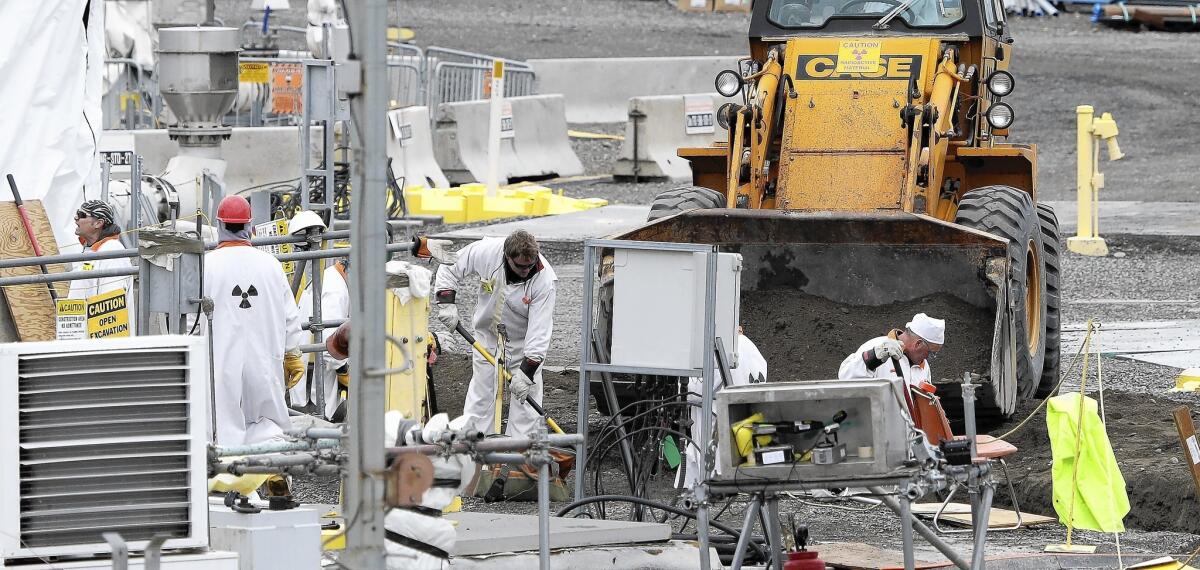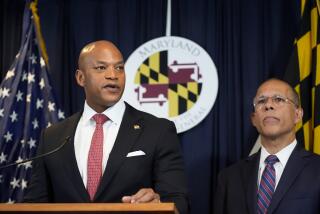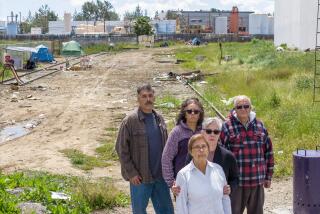Washington state accuses U.S. of missing Hanford cleanup deadlines

Washington state accused the federal government Monday of missing crucial legal deadlines to clean up 56 million gallons of highly radioactive waste at the former Hanford nuclear weapons site in southeastern Washington, demanding a new set of schedules by April 15.
Gov. Jay Inslee and state Atty. Gen. Bob Ferguson sent a letter to Energy Secretary Ernest J. Moniz demanding that eight new double-shelled storage tanks be built to hold waste that is in leaky underground tanks with single steel walls. A state attorney said the eight tanks would cost $640 million, based on federal estimates.
The aging tanks contain plutonium, cesium and other toxic material, the byproduct of decades of nuclear weapons production that represents a dangerous environmental threat.
Inslee said the federal government had failed to come up with a plan to fix serious technical problems that undermined construction of a treatment facility for the waste — a technology about which there are growing doubts.
“I understand they have challenges, but that is no excuse for not meeting their obligations,” Ferguson said in an interview. “They entered into an agreement, and I intend to hold them to the agreement.”
The state’s new demands are a response to the Energy Department’s disclosure last year that it will probably fail to meet more than a dozen key milestones in constructing a $13.4-billion waste treatment plant that would transform radioactive sludge into solid glass, which could later be buried at a disposal site.
The 27-page plan that Washington state sent to Moniz accuses the Energy Department of operating on its own schedule, despite signing off on stringent deadlines in a 2010 legal agreement meant to remedy years of violations of a pact dating from the 1980s.
Critics of the cleanup project said they were encouraged that Washington is talking tough and demanding new tanks but questioned whether state officials are repeating the kinds of political mistakes that have dogged the project for decades.
“The state has to be asking itself, ‘Here we are holding another press conference on Hanford. What has changed?’” said Tom Carpenter, executive director of Hanford Challenge, a nonprofit group that has assisted several high-profile whistle-blowers who were fired after raising public concerns about flawed engineering at the project. “The issue is whether the cleanup is only a series of press conferences, saying we have to do better in the future.”
After the Hanford site was taken out of operation in the 1980s and the public learned that the vast 586-square-mile area was badly contaminated, the Energy Department agreed to begin treating the waste by 1999. That deadline slipped to 2011 and then again to 2019.
Construction of key parts of the treatment plant was stopped in 2012, when senior engineers began to question whether the design was critically flawed. And last year, the Energy Department disclosed a vague plan to change direction, proposing to build a limited-purpose interim plant that would process some waste while problems on the main plant were resolved. Washington state officials want that interim plant built as quickly as possible.
Whatever the problems and their solutions, Ferguson said, the state would no longer accept delays. “Each and every delay does damage to the state of Washington,” he said. “They increase the risk of further contamination.”
More to Read
Sign up for Essential California
The most important California stories and recommendations in your inbox every morning.
You may occasionally receive promotional content from the Los Angeles Times.











